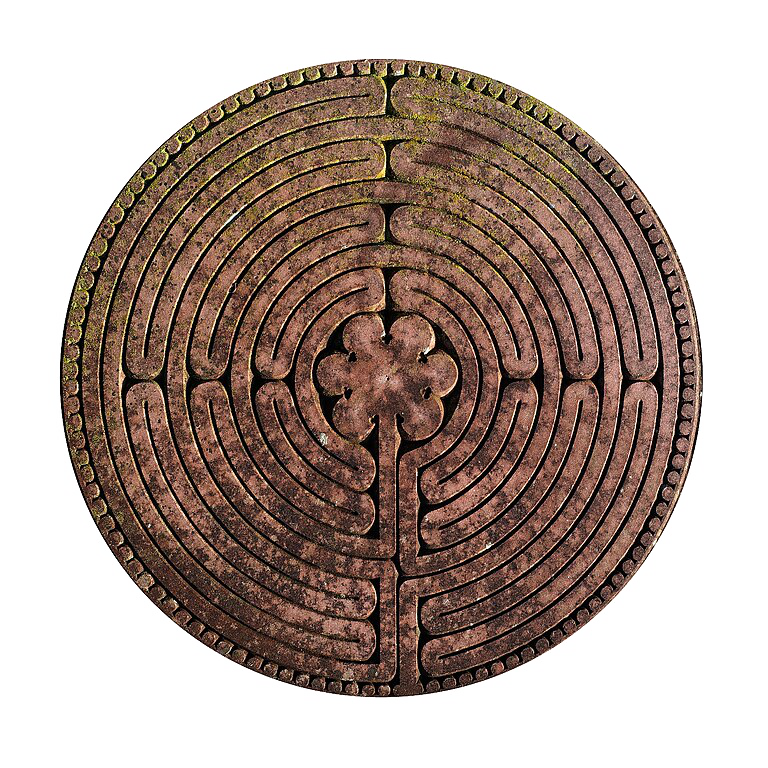
The Veil of Saint Veronica
Face of Christ, Claude Mellan (1649)
An arresting depiction of the veil of Saint Veronica, the saintly woman who, according to tradition, wiped the sweat, spittle and blood from the Face of the Saviour as He carried the Cross to Golgotha on Good Friday. The Lord left His sorrowful countenance imprinted on the cloth as a reward for her compassion.
A hypothesis suggests that St Veronica’s name would mean ‘real image’ or ‘vera icon’, in reference to the Holy Face of Christ as venerated on His Holy Shroud (still in Turin). This possible etymology does not mean that the holy woman did not exist, but it emphasises the purpose of the devotion, namely, to imitate Christ in all things, configuring our soul to His like a replica of His Holy Face.
The Latin inscription on the hem of the veil, Formatur Unicus Una / Non Alter (the unique one made by one / [like] no other) refers literally to the picture drawn with one single line, and theologically to the virginal conception of the Man Christ by His Immaculate Mother, the Blessed Virgin Mary.
The technique applied is a message in itself. The entire picture, indeed, consists of one single uninterrupted line drawn as a spiral. The incised line is made thinner or broader wherever relevant, to give the illusion of shapes, shadows and contrasts. It starts at the tip of the nose of Christ.
That artistic line strikes us as an eloquent representation of what the life of a Christian should be. Our existence is continuous, from conception to our last breath. Like the incised line, it knows no interruption. We go through periods of material and spiritual prosperity and comfort, alternating with phases of unease and suffering.
Such successions, such variations, remain mostly mysteries to us. When propitious, we may ascribe causes to them, often connected – think we – with our skills and merits. When adverse to our tastes, those variations may lead us to despair, wanting to call life absurd and the world unjust.
What we don’t realise at the time is that the apparently capricious swelling and tightening of our circumstances produces a portrait of Christ, as displayed by the now broad, now thin, incised line on Mellan’s engraving. The more we surrender to the design of the divine Artist, the more faithfully our life represents Him. But such resemblance can only be assessed from a distance, and once the line has been interrupted – by death.

The famous labyrinth displayed in the paving of the medieval Chartres cathedral (image by EinDao, Wikimedia Commons) in France offers a geometrical equivalent. It was called the ‘Road to Jerusalem’. Pilgrims would walk along its uninterrupted line symbolising every man’s spiritual journey, thankfully ending with the encounter of the Saviour face to Face.
Says expert Peter Raissis: “Mellan’s Veronica is a spectacular tour de force of the engraver’s art. The face of Christ is conjured from a continuous spiralling line that starts at the tip of the nose and is thickened in places to delineate the features and create tone. It is a demonstration of the artist’s unerring skill in guiding the burin – the engraver’s tool used for incising lines. Starting with the tip of his burin in the centre of the plate, Mellan pushed the tool forward while simultaneously rotating the copper plate with his free hand in an anti-clockwise direction to create a near perfect spiral.”
How fitting, in addition, that on Mellan’s masterpiece, the Holy Face is not supposed to be depicted immediately on this engraving, but only as miraculously imprinted upon St Veronica’s veil. It is meant to be a print of a imprint. This reminds us that the human artist, if humble, does not claim to create anything but simply to imitate.
Mellan reproduced on copper plate the original glimpsed in his contemplation. But to prevent any illusion of life, he drew his picture as if spread across the chevrons and fibres of a piece of material. He seems to tell us: This is not Christ for real – for how could I, a sinner, adequately represent Him? This is a picture of the cloth bearing Christ’s imprint.
So should we think about our souls, patiently configured to our beloved Model. The sequela Christi, or imitation of Christ, is the finest of fine arts.
